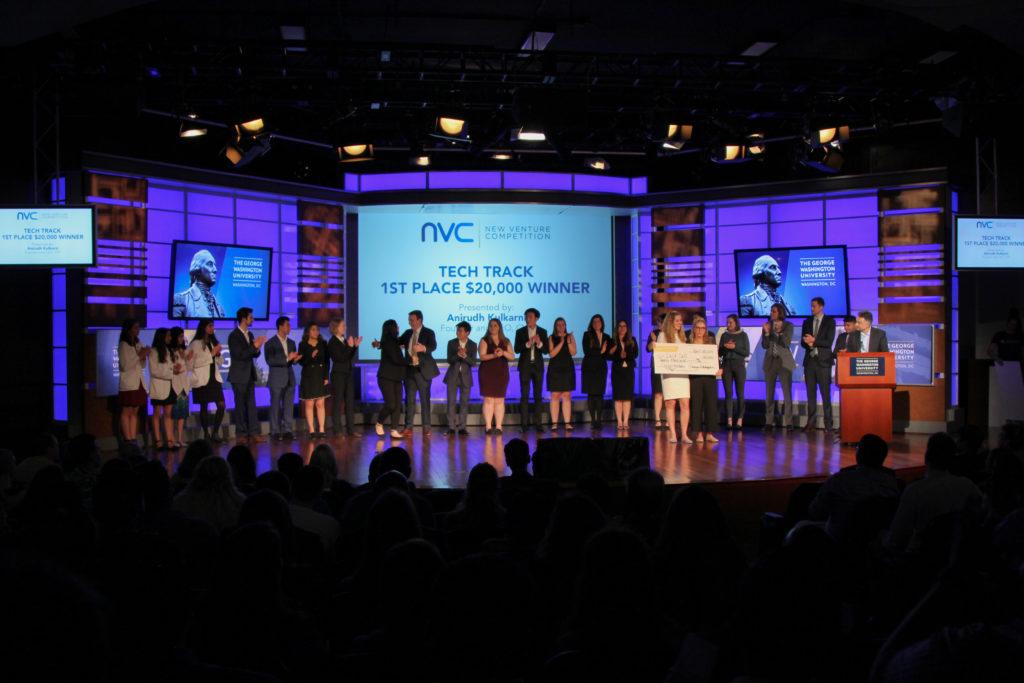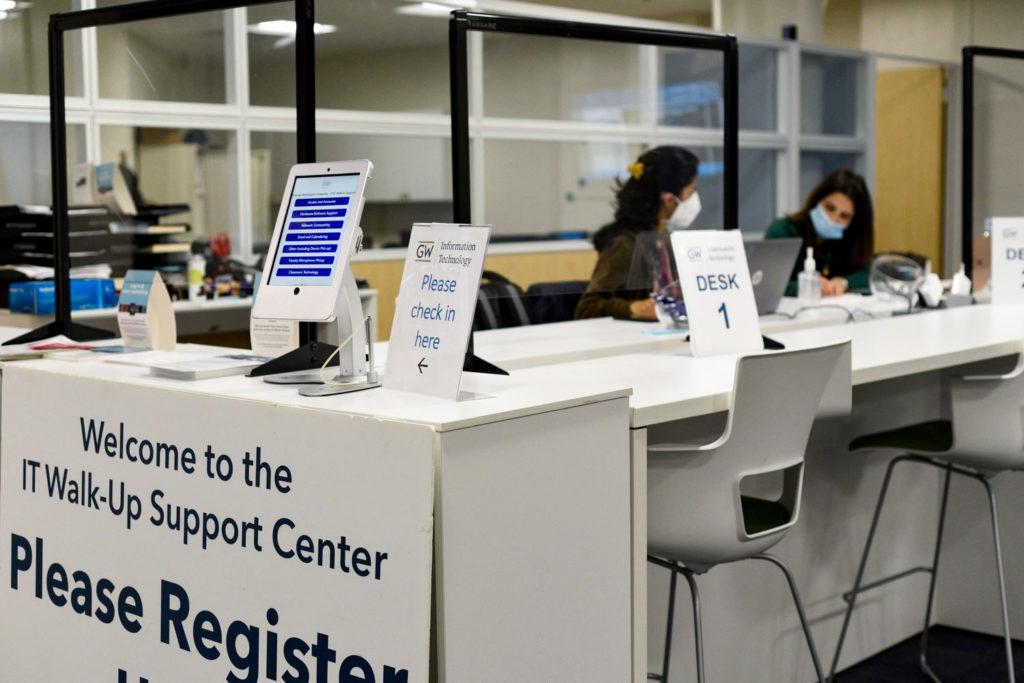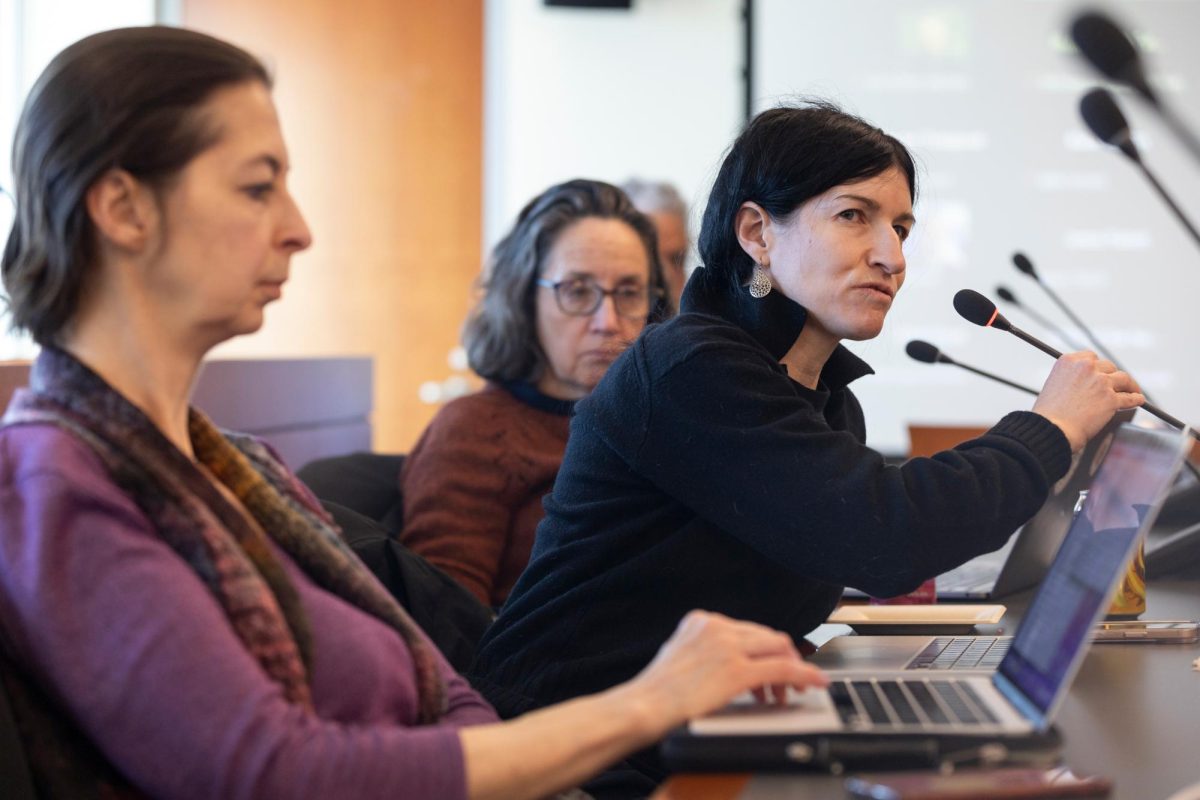Winners of GW’s annual start-up competition said officials’ decision to hold the competition virtually this year allowed them to propel their business ventures despite the impacts of COVID-19.
Officials held the final round of judging for the New Venture Competition online and broadcasted the awards ceremony live on Facebook in place of the in-person ceremony typically held in April. Scott Stein, the associate director of student entrepreneurship programs in the Office of Innovation and Entrepreneurship, said officials made changes to the program to ensure it could continue despite the ongoing pandemic, which had a “huge impact” on the event.
“We heard from a lot of different students around the idea that some of these competitions have been closed or postponed, but we decided that we were not going to do that,” he said at the awards ceremony. “Students said they really enjoyed working with us and wanted to see this through. We made lots of adjustments.”
Administrators announced in February that this year’s competition received 428 entries, an all-time high, and participants took home a combined total of $500,000 in cash and prizes.
Judges selected one winner for each of three categories: tech ventures, which offer new proprietary technology and an intellectual property component; social ventures, which offer solutions to “social or environmental problems”; and new ventures, which involve commercial services, products or businesses to “drive substantial market impact,” according to the competition’s website.
Anna Grim, a junior in the Columbian College of Arts and Sciences, said her team’s winning tech venture, called Ichosia Biotechnology, developed a method to mass-produce Erythrosine, an enhanced red blood cell product aimed at replacing the need for donors to give blood.
She said her team’s venture could help alleviate shortages at blood banks caused by the ongoing COVID-19 pandemic.
“We will eliminate the current donor blood shortages by producing an alternative to donor blood that is universally compatible and disease-free,” Grim said in an email.
Grim said she was “amazed” when she learned her team won the competition and $40,000 in cash prizes, which they plan to use to further develop their product. She said she found the online competition was “less stressful” because the competition’s audience was smaller.
“It was incredible to see all of the hard work and effort be rewarded, and I am so grateful,” she said.
Lucas Vining-Recklitis, a sophomore in CCAS who was a part of the Ichosia Biotechnology team, said he started research on the topic in late 2017 for his senior thesis in high school but has been working on the product as a business venture for about a year with the rest of his teammates.
The COVID-19 pandemic caused many other competitions the team entered to be canceled, which strained their fundraising opportunities, but Vining-Recklitis said the New Venture Competition allowed the group to raise more than double their initial goal of $50,000 for the project by the end of spring.
“From March 1 to March 15, I watched 80 percent of our funding opportunities leave me,” he said. “So that was a really big strain and I thought, ‘OK, well where’s the money going to come from now?’ Because you still need to do the research and development, or else we’re a very static company, and we don’t have anything going on. George Washington was pretty much the only competition that happened.”
He said the team is determining the most cost-effective methods to continue research, which has been complicated by laboratory closures resulting from the virus.
RestEasy, a wearable monitor that detects nighttime asthma attacks in children and entrant in the competition, received the event’s inaugural Audience Choice Award, said Shelly Mishra, a doctoral student in the School of Medicine and Health Sciences and member of the RestEasy team.
“The aim of RestEasy is to decrease the stress that parents with asthmatic children face while also providing better monitoring for asthma attacks,” she said in an email. “Additionally, we want to give parents the option to share this information with clinicians and schools to provide better communication regarding the status of their children’s asthma.”
Officials debuted the audience award at this year’s competition to community members to vote for their favorite of the 12 finalists in the days leading up to the final awards ceremony.
“We hope that the ideas of GW’s most talented students from all over the world inspire you as much as they have our team during this difficult time,” officials wrote in an email to the University community encouraging members to vote. “Now more than ever innovation, ingenuity and inspiration are needed to keep us hopeful.”
Mishra said her team was “shocked” when they were told they had received more than 1,000 of the approximately 6,000 total votes.
“We had definitely put a lot of effort into spreading knowledge about RestEasy from telling family and friends to even emailing the medical school and sending a message to our entire class about the product,” she said. “However, I did not imagine that people would have been as supportive as they were and helped us to win that award.”
She added that the new award, which included a $10,000 cash prize, gave teams an incentive to share their creation with others outside of the GW community. Her team reached out to many of their family members and friends to promote RestEasy, Mishra said.
“I was able to hear their opinions and questions about RestEasy and get some new insights that I hadn’t thought of before,” Mishra said. “Overall, I think the Viewers Choice Award as an additional prize challenges teams to reach outside their normal network and be more entrepreneurial in raising publicity about their innovation.”
Alec Rich contributed reporting.








